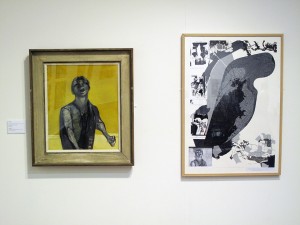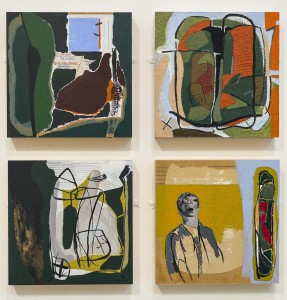It’s often productive to read more than one text at a time because of the unexpected cross-fertilization that result. This has been the case for me with reading the International Federation of Red Cross and Red Crescent Societies’ Think differently, Humanitarian impacts of the economic crisis in Europe – see http://www.ifrc.org/en/news-and-media/features/european-economic-crisis/ – in the middle of working my way through Tom Finkelpearl’s What We Made: Conversations on Art and Social Cooperation (Duke University Press 2013). The particular cross-fertilization I want to pick up on here is between observations made by Daniel Joseph Martinez – a professor of theory, practice, and the mediation of contemporary art at the University of California, Irvine – and the opening statement of the IFRC’s report. This reads:
“Creating a sense of predictability and security has traditionally been attributed to what a society offers to its citizens.
Today, as the economic crisis has planted its roots, millions of Europeans live with insecurity, uncertain about what the future holds.
This is one of the worst psychological states of mind for human beings and we now see a quiet desperation spreading among Europeans, resulting in depression, resignation and loss of hope for their future”.
I know quite enough about living with insecurity – in my case to do with unpredictability around medical responses to my daughter’s longterm illness – not to wish unpredictability and insecurity on anybody at the level of their familial, day-to-day life. However, the assumption that the function of society has traditionally been first and foremost to create a sense of predictability and security for its citizens seems to me a little simplistic to say the least and, at least in my view, needs contextualising. There are, I suggest, some very particular modern and secular assumptions at work that don’t necessarily sit very well with what we know of European history.
It’s in this context that Martinez’s observations seem particularly pertinent.
Asked about changes in his practice in the mid-1990s he refers to the importance of mutation, of being willing to see practice as “unpredictable and uncontrollable”, and of the value of this as a basis for ideas where the emphasis is on creativity in a social context as in “perpetual motion, constant flux” (Finkelpearl 2013: 70). The contrast between this understanding of creative arts practices – and as someone much influenced by Joseph Beuys’ notion of Social Sculpture we can be reasonably certain he would extend this to creativity more generally – and the emphasis, in the IFRC’s report, on predictability and security strikes me as worth exploring. After all, in the context of creative imagination it’s fairly obvious that a degree of uncertainty about what the future holds can be a useful, indeed highly productive, state of mind.
A book that made a very marked impression on me in terms of mapping shifts and clashes in historical mentalités is Emma Wilby’s The Visions of Isobel Gowdie: Magic, Witchcraft and Dark Shamanism in Seventeenth-Century Scotland (Sussex Academic Press, 2010). It illuminates, in extraordinary detail, the point of interaction between two radically different mentalités: on the one hand that of a traditional peasant culture in which vernacular quasi-pagan beliefs co-existed both with residual elements of the Catholic faith and of the new Protestantism and, on the other hand, the new social order predicated on an essentially middle and upper class Calvinism. What is particularly significant about this clash here is that each of these mentalités, which uneasily co-existed for a while, would have understood predictability and security in very distinct ways and have valued them very differently. For example, for the vast majority of the rural poor in Calvinist Seventeenth-Century Scotland one of the very few things they know for certain was that their social status would not improve in this life and that, as born sinners who found themselves within a religious orthodoxy based on predestination, they were almost certainly condemned to the fires of Hell in the next. In terms of predictability, Wilby also makes very clear the almost unbelievable predictability, monotony and restrictions of the ordinary life or a Scottish peasant at that time.
While I have clearly chosen extreme examples, I want to make the point that neither predictability nor security need necessarily be the unalloyed or necessarily obvious ‘good’ that the report assumes them to be. What we take to be predictable – be it eternal damnation or, in the case of the mentalité of possessive individualism, the ‘sustainability of economic growth’ – may be nothing more than a delusory phantom, one on which we become so fixated that we cannot imagine an “otherwise”. Arguably it was precisely because of her creative ability to imagine an “otherwise” through a creative synthesis of vernacular and other traditions and beliefs that Isobel Gowdie was executed. The predictabilities and securities we buy into may, then, also be the means by which we are manipulated by those who hold power in a society.
Which returns us to Martinez’s points about creativity and the unpredictability of mutability.
I don’t want to labour the point here, not least because I really do not in any way wish to imply that predictability and security are not vitally important to human society and wellbeing. My point is simply that unpredictability and insecurity, particularly as these help us see through phantasmagoric worlds such as that created by the current British government (which is actively working against both the spirit and practice of all six of the recommendations of the IFRC’s report), have their place too. Particularly where they act as a spur to a creativity that allows us to imagine the world “otherwise”.

